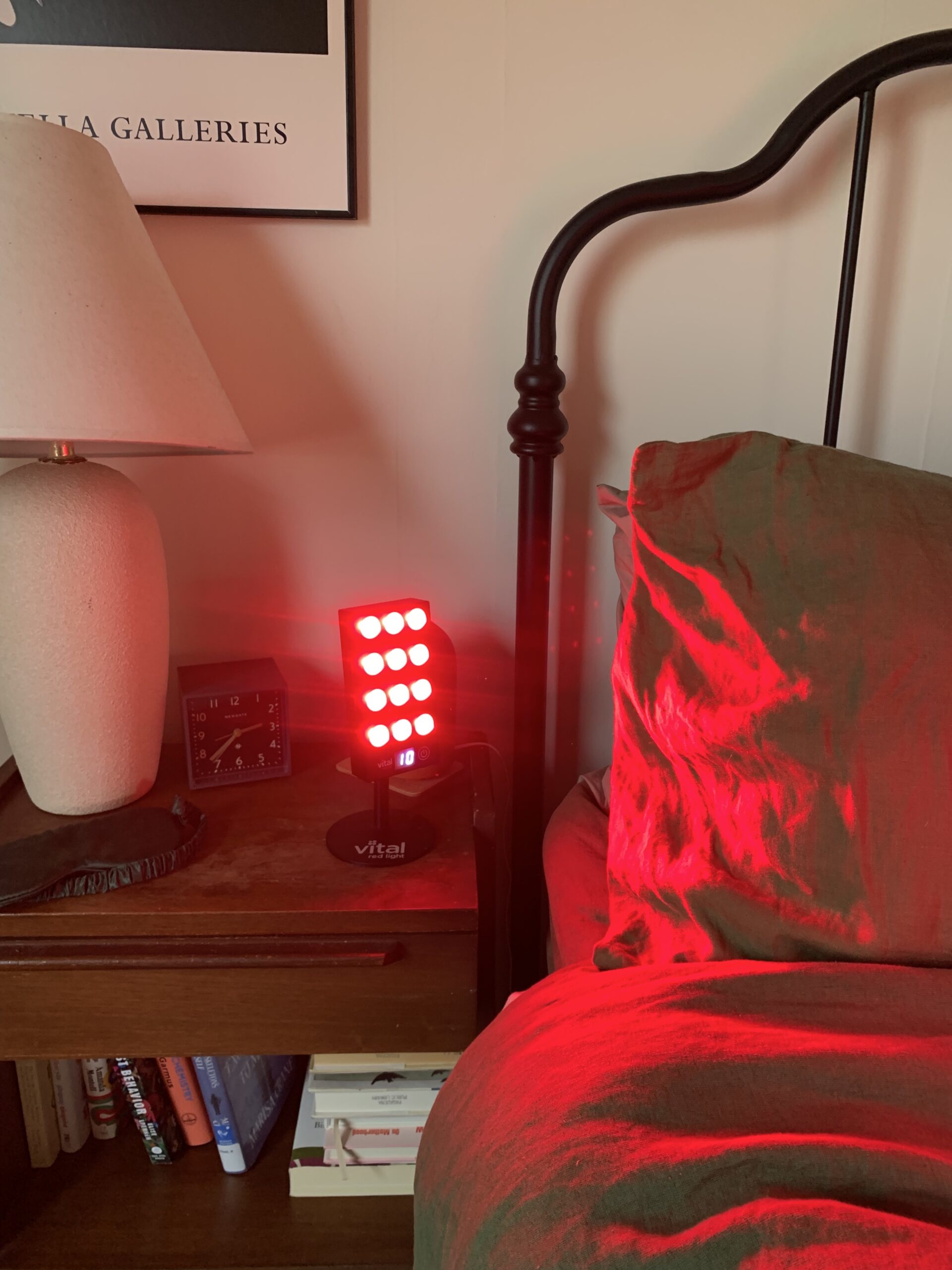
Is Box Breathing The Secret To Better Sleep?
When I was seven, I slept through a magnitude five earthquake while my family was on vacation in Southern California. In the early morning hours, our hotel room violently shook, waking everyone except me. After that experience, I learned I could sleep just about anywhere and through anything—a skill that became exceptionally useful for traveling in my 20s. Paper-thin hostel beds or cold airport floors were just interesting places to sleep. One summer, I even took a 26-hour bus ride to save money on airfare, despite 500 of those miles being on a pothole-ridden dirt road. It wasn’t my best night’s sleep, but I still slept.
Something shifted when I entered my 30s, and I noticed my once-heavy sleep patterns turning into restless nights. Even after the recommended eight hours of sleep, I’d wake up exhausted, unable to make it through the day without multiple cups of coffee or naps.
My doctor suggested I incorporate lifestyle changes—from cutting out alcohol to trying melatonin to reading rather than watching TV before bed. These alterations helped some, but I still found myself lying awake most nights, struggling with anxious thoughts and unable to turn my brain off. Exasperated, I’d stare at the ceiling and—as a last resort—count sheep.
Sometime last fall, I downloaded a breathing and meditation app to see if someone, or rather some soothing voice, could help “guide” me to sleep.
Sometime last fall, I downloaded a breathing and meditation app to see if someone, or rather some soothing voice, could help “guide” me to sleep. I even paid for the annual subscription to access the full library of breathwork and meditations, ranging from three to 30 minutes. Desperate times, you know. I didn’t realize I was doing different variations of box breathing when I first started. I simply followed the voice on the app.
Breathe in for four counts, hold for four counts, exhale for four counts, hold for four counts.
A technique used by Navy SEALs and also highly regarded in mindfulness and yoga spaces, box breathing—or different variations of the inhale, hold, exhale, hold method—calms the nervous system and decreases stress. It can also help alleviate anxiety and frantic thoughts while trying to fall asleep.
“Box breathing is a technique that helps you take control of your automatic breathing patterns to train your breath for optimal health and performance,” says Mark Divine, a bestselling author and former US Navy SEALs Commander, in an interview with Forbes. Navy SEALs have long used box breathing to keep calm in stressful and dangerous situations, and it’s become increasingly popular in wellness spaces for the health benefits, too—like improved sleep quality.
“Breathwork is one of the top recommended natural sleep aids, and can also be helpful for those struggling with insomnia,” according to Othership, the app I downloaded for guided breathwork meditations. “Regularly practicing breathing exercises can help regulate your energy levels so you can properly fall asleep.”
A 2018 study by Frontiers In Psychiatry explains how “modern frenetic lifestyles” lead to a “chronically elevated sympathetic state”—the part of our nervous system that controls our “fight or flight” response. And this only leads to disturbed or restless sleep. Instead, we need to activate the parasympathetic system to decrease our heart rate and blood pressure. Essentially, box breathing tells our nervous system, “Hey, you’re safe. You can relax now.”
Essentially, box breathing tells our nervous system, “Hey, you’re safe. You can relax now.”
I tried box breathing for a month, expanding the practice by spraying my pillow with a calming sleep mist and turning on a red light lamp. It all felt ridiculously staged, and I initially missed the days of collapsing into bed and burrowing beneath the covers while a high-speed fan obliterated all other noise. But something about this new routine stuck. Maybe it was because I was finally getting some rest.
With box breathing, I was motionless, the room silent except for an omnipresent voice named Harry lulling me to sleep. With my hands resting on my belly and my face drenched in red light, I followed his instructions to inhale through my nostrils for a count of four, hold for four, and then release through my nose for a count of eight. After just a few minutes, like my childhood self, I fell into a deep and undisturbed sleep. When I woke in the morning, I felt like I’d been on another planet.
I’ve been using box breathing, or some variation of breathwork, ever since. It’s been a few months now, and it’s become an essential part of my bedtime routine. While it’s not every night I need the app to fall asleep, I use it a few times a week to quiet my anxious thoughts and calm my nervous system. On the nights I don’t use it, I intuitively slow and deepen my breathing when my head hits the pillow.
The most significant change I’ve noticed is that I’m more aware of my breathing entirely. I regularly practice deep exhales throughout the day to calm my nervous system or when I realize I’ve been breathing shallowly and through my chest instead of my belly. Breathing this way has so many incredible benefits and most notably helps slow down my thoughts when I’m feeling overwhelmed. It invites me to reconnect with my body, too, and practice more mindfulness and presence.
“Envision a box while you inhale for four counts, hold at the top for four counts, exhale for four counts, and hold at the bottom for four counts.”
Want to try box sleeping for yourself? I recommend Othership, an app for guided sessions set to calming music. I like that they have various kinds of breathing techniques specifically for sleep (my favorite being the 4-4-8). The app is free with a subscription-based option.
Box breathing is also easy to do on your own. Simply envision a box while you inhale for four counts, hold at the top for four counts, exhale for four counts, and hold at the bottom for four counts. Trace each side of the box with each breath variation, breathing solely through your nostrils as you fall into a deep and restful sleep.
Kayti Christian (she/her) is the Managing Editor at The Good Trade. She has a Master’s in Nonfiction Writing from the University of London and is the creator of Feelings Not Aside, a newsletter for sensitive people.




